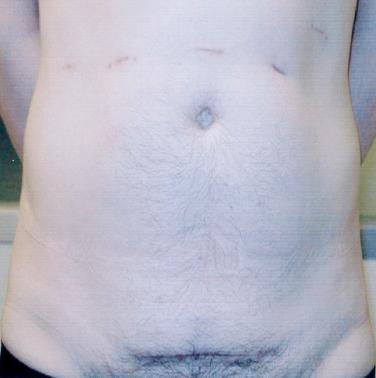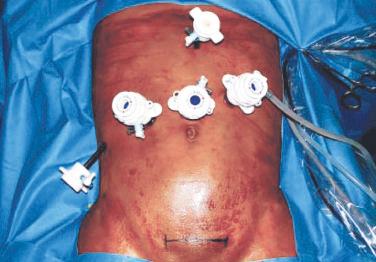Physical Address
304 North Cardinal St.
Dorchester Center, MA 02124
Although over 6000 people receive a liver transplant in the United States each year, more than 16,000 patients are listed. The growing gap between the demand and supply for liver grafts is one of the biggest challenges in liver transplantation. Despite enormous effort to increase the pool of deceased donor organs, more than 2000 patients die on the waiting list each year. An absolute imperative to the liver transplant community therefore is to find and improve methods to increase the number of potential liver grafts to meet the ever-growing demand.
Living donor liver transplantation (LDLT) is an alternative option to liver transplantation from deceased donors. Faced with the organ shortages, LDLT can provide additional organs from a potentially unlimited source of healthy donors. Living donors provide excellent quality grafts with similar or even better short-term graft function and long-term survival, especially in children, as compared with whole and split-liver transplant. Currently, however, only about 4% of the liver recipients in the United States receive a living donor transplant.
Kidney transplantation shares the same problem of organ shortage as liver transplantation. To reduce morbidity and the invasiveness of living donor nephrectomy, the transplant community developed minimally invasive approaches, including pure laparoscopic donor nephrectomies, laparoscopic hand-assisted donor nephrectomies, and robotic laparoscopic donor nephrectomies. Laparoscopic living donor nephrectomy has become the standard of care for kidney transplantation. This evolution in technique has significantly increased the appeal of donation and subsequent number of living kidney donors.
The living donor liver community is certainly primed and ready for such a strategy. Minimally invasive techniques, such as laparoscopic surgery, hand-assisted laparoscopic surgery, and robotic surgery, have evolved over the past 2 decades. These minimally invasive procedures have many advantages over conventional open surgery, such as rapid postoperative recovery, fewer pulmonary complications, and an excellent cosmetic outcome. Laparoscopic surgery has been used for an increasing number of surgical procedures with the aim of reducing postoperative pain, recovery time, and surgical morbidity. Specifically, the more recent development of laparoscopic liver resection has shown the potential for a reduction in morbidity as compared to standard open techniques. An innovative strategy to increase the number of liver grafts by making living liver donation safer and more appealing to potential donors therefore should be promoted.
Considering the magnitude and complexity of any donor hepatic surgery, the traditional approach has been an open donor surgery. For instance, the accepted approach for open donor right hepatectomy has been a bilateral subcostal incision with midline extension (Mercedes incision). A subsequent modification to decrease the length of the incision was a right subcostal incision with midline extension ( J -shape incision) avoiding the left subcostal extension. The prospect of this large incisional scar may make some live liver donors reluctant to undergo the surgery because of concerns about self-image. The open approach is associated with significant wound complications, surgical pain, surgical time, recovery time, and length of stay, and it affects the quality of life of living donors. Although open donor right hepatectomy is accepted, well described, and characterized as a relatively safe procedure, it is associated with a complication rate of up to 40%.
In response to these factors associated with open donor hepatectomies, the transplant community has therefore reasonably committed to developing minimally invasive approaches to minimize the morbidity burden in living liver donors and to increase the appeal of the procedure. Minimally invasive techniques benefit patients in need of liver resection in several ways when compared to open resection. First, they reduce both long-term and short-term morbidity, and second, they improve the cosmetic result of the surgical intervention. Liver surgery typically requires subcostal incision(s) most often combined with a midline extension. The subcostal incision is necessary for most liver resections, both lobar and segmental, especially of the right lobe. Short-term complications of subcostal incisions include pain with increased need for narcotics and splinting with subsequent atelectasis and other pulmonary complications, all contributing to extended hospitalizations. Long-term sequelae include numbness and paresthesia in the inferior aspect of the anterior abdominal wall secondary to transection of the superior branches of the inferior epigastric neurovascular bundle, resulting in rectus abdominis weakness and incisional hernias, as well as cosmetic considerations, including the perception of disfigurements.
The limiting step to wider application of LDLT will always be donor risk. Any effort to minimize the morbidity associated with living donor hepatectomy is therefore always worth considering. Some of the innovations to minimize or improve open donor hepatectomies to make them less invasive include laparoscopic left lateral segmentectomy, laparoscopic hand-assisted right hepatectomy, laparoscopic hand-assisted right hepatectomy using a midline incision “hybrid method,” laparoscopic hand-assisted right hepatectomy using a transverse or subcostal incision, single-port laparoscopic-assisted right hepatectomy using a right subcostal incision, 21 right hepatectomy through upper midline laparotomy, right hepatectomy through an upper midline minilaparotomy with or without laparoscopic assistance, and robot-assisted right hepatectomy.
In this chapter we will describe the advantages and disadvantages of multiple variations of minimally invasive donor hepatectomies ( Table 56-1 ). Each must be considered for its potential efficacy, feasibility, and ability to provide an applicable safe procedure that will be appealing and safe for any potential donor.
| Technique | Anatomical Unit Procured for Donation | N | Surgical Time | Ports | Extraction Site Location (Size) | WIT | EBL | RBC | Hospital LOS (Days) | Complications | Author | Year |
|---|---|---|---|---|---|---|---|---|---|---|---|---|
| Laparoscopic | LLS | 2 | 6-7 hr | 5 | Pfannenstiel (10 cm) | 4-10 min | 150-450 mL | 0 | 5-7 | None | Cherqui | 2002 |
| LLS | 16 | 4-6.5 hr | 5 | Pfannenstiel (10 cm) | 6-10 min | 20-60 mL | 0 | 7.5 (5-16) | 19% 1 Open conversion 2/2 LPV injury 1 bile leak |
Soubrane | 2006 | |
| RL | 2 | 12.8 and 15 hr | 5 | R transverse (9 cm) | 0 | 10 and 14 | Suh | 2009 | ||||
| Single-port laparoscopic assisted | RL | 40 | 4.6 hr ± 72 min | Single (4 ports) (5 cm) | R subcostal (15 cm) | NR | 450 ± 316 mL | 0.25 ± 0.81 | 11.8 ± 4.5 | 2 Open conversion 1 R diaphragmatic injury |
Choi | 2012 |
| Laparoscopic assisted | RL | 4 | 3.9 h | 2 | Subxiphoid midline (5 cm) | 1.5 min | 150 mL | 0 | 3 (2-4) | None | Koffron | 2006 |
| RL and LL | 13 | 6 hr ± 32 min | 4 | Upper midline (8 cm) + R subcostal (4 cm) | 3 min | 302 ± 191 mL | 0 | 11 ± 2.7 | None | Kurosaki | 2006 | |
| RL | 7 | 5.1-9.6 hr | 5 | R transverse | 0 | 8-17 | Suh | 2009 | ||||
| RL | 33 | 4.4 hr (3.6-5.2) | 2 | Subxiphoid midline (5 cm) | NR | 417 mL (200-634) | 0 | 4.3 | 2 Open conversion 2 bilomas (2 reoperations) |
Baker | 2009 | |
| RL | 19 | 6.5 hr (5.3-7.6) | 3 | Upper midline (10 cm) | NR | 350 mL (176-524) | NR | 6.3 (5-7.6) | 25% | Nagai | 2012 | |
| RL | 20 | 6.4 hr ± 41 min | NR | R subcostal (15 cm) | NR | 870 mL ± 653 | 1.25 ± 2.05 | 12.1 ± 2.81 | 2 Open conversions 1 R diaphragmatic tx and capsular hematoma |
Choi | 2012 | |
| Upper midline laparotomy | RL | 23 | 3.9 hr ± 29 | 0 | 13.5 cm (12-17) | 0 | 185 ± 59 mL | 10 ± 2.9 | 1 Bile leak 2 bleeding |
Kim | 2009 | |
| RL or ERL | 141 | 4 hr 14 min ± 47 min | 0 | 12-18 cm | NR | 352 ± 144 mL | 10.3 ± 3.1 | 4 Reoperations for bleeding | Lee | 2011 | ||
| Mini laparotomy | RL | 9 | 5.9 hr (5.1-6.8) | 0 | Upper midline (10 cm) | NR | 177 mL (88-266) |
NR | 6 (4.5-7.5) | 25% | Nagai | 2012 |
| Robotic | RL | 1 | 8 hr | 5 | Midline infraumbilical (7 cm) | NR | 350 mL | 0 | 5 | PV stenosis | Guilianotti | 2012 |
Laparoscopic approaches to living donation were initially described for removing a left lateral segment graft for transplantation into a child. Many reports had already demonstrated the feasibility of laparoscopic hepatic lobectomy but not in the setting of living donor procedures. A French group first performed the surgery laparoscopically, and the graft was removed through a suprapubic Pfannenstiel incision. Donor surgery lasted 6 to 7 hours, and the ischemic times were 4 and 10 minutes. Blood loss was 150 to 450 mL, and no transfusions were required. Both grafts procured in this fashion were successfully transplanted, and the donors were discharged home 5 to 7 days postsurgery. Dr. Cherqui’s team initially demonstrated the feasibility of this laparoscopic living donor hepatectomy of the left lateral segment. They hypothesized that the safety and feasibility of this type of procedure would be shown in larger series, as it has been, and now it has become an acceptable standard of care procedure in centers with applicable expertise in advanced laparoscopy.
The procedure has been described with the patient under general anesthesia in the supine position with the legs apart. Five trocars were used ( Figs. 56-1 and 56-2 ). The left lateral segment was mobilized by dividing the falciform and left triangular ligaments, and vascular structures were dissected and encircled. The liver transection was performed with a harmonic scalpel (Ultracision; Ethicon, Somerville, New Jersey) and an ultrasonic dissector (Dissectron; Satelec, Meriignac Cedex, France) without vascular clamping. The bleeding was controlled with bipolar electrocoagulation and clips. A 10-cm suprapubic incision was made to introduce a 15-mm trocar to introduce a large specimen bag to retrieve the liver.


The advantages of a laparoscopic approach to left lateral segmentectomy are clearly in the lack of upper midline incision and the rapid recovery to normal function. Unfortunately, only surgeons very well versed in the art of advanced laparoscopic techniques can safely perform this operation, limiting its applicability.
In response to the continued significant interest in laparoscopic liver surgery as it may apply to living donation, but also with an eye toward developing a procedure that may be more widely applicable to all donor surgeons, we first performed a laparoscopically assisted donor right hepatectomy (LADRH) at Northwestern University in 2006. In our first and other publications, we and others have demonstrated the safety and efficacy of laparoscopically assisted hepatectomy for the resection of hepatic tumors with reduced blood loss, shorter operative times, and decreased postoperative hospital stays, and have also demonstrated its applicability to living donation.
The approach typically uses the “hybrid method,” a laparoscopically assisted method for liver resection. The technique represents a hybrid between the minimally invasive and open techniques. The hybrid technique abrogates the need for standard subcostal incisions in most liver resections and therefore is consistent with the principles of minimally invasive surgery. The incisions required are identical to those used for a hand-assisted laparoscopic procedure. This surgical approach can be performed by surgeons with minimal laparoscopic skills, does not require laparoscopic techniques and devices for either dissection of the hepatic hilum or transection of the liver parenchyma, and thus allows surgeons to adhere to more familiar, safer open techniques.
Become a Clinical Tree membership for Full access and enjoy Unlimited articles
If you are a member. Log in here